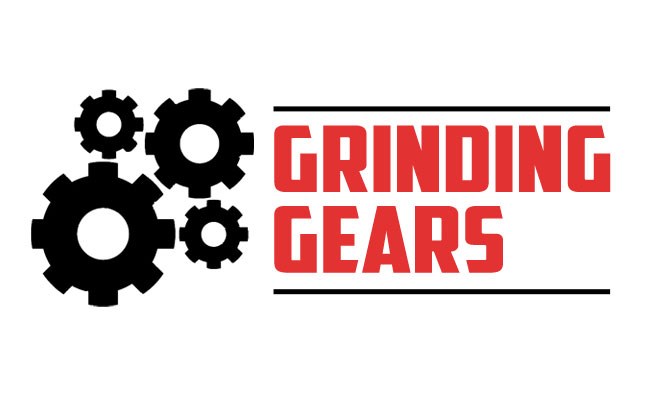Is it time to throw in the towel on horsepower and torque?
If you're a gearhead, that question comes with a resounding, "No!" Horsepower is awesome! More of it! Dodge Hellcats for everyone!
Fair enough - that's mostly my attitude as well - but when I say it's time to retire horsepower and foot-pounds, I'm talking about the measurements. What's a horsepower? Ask the average person on the street, and they'll tell you it's the amount of power a horse can produce: makes sense, right? Thus, the lowly Nissan Micra is 109 times as powerful as a horse. And it doesn't poop everywhere - isn't progress wonderful?
Hang on, things aren't quite so cut and dried. Is that Micra making its power at the crankshaft or at the wheels? If we attached 109 horses to a harness and then strapped them to the Micra's bumper, wouldn't they just pull it all over creation? And what exactly is a foot-pound anyway? As an amateur carpenter, I know what a pound-thumb is, but foot-pound? No idea. Extra clumsy, perhaps? Let's go back to the beginning. In the late-1700s, engineer James Watt was trying to figure out how to sell his newly improved steam engine to industry. Most mining and milling equipment, where water power wasn't used, currently used draft horses. Aha, thought Watt (or possibly, "Och aye"), I'll figure out how many horses my machine can replace and go from there.
By dint of careful calculation, Watt first calculated that a pit pony could pull coal up a shaft over a certain distance and a certain time. Then he added an extra 50 per cent for a horse's greater size, and figured one horse could produce around 33,000 footpounds per minute.
A less apocryphal story puts Watt into the Whitbread brewery, watching dray horses walk in endless circles around a millwheel, pulling at an average 180 pounds of force around a 24-foot diameter mill-wheel, turning a circle 144 times in one hour. He reckoned this down to 33,000 pounds pushed a foot every minute, and rated that as a single horsepower.
Work is a simple equation: force times distance. Push down on a bicycle pedal with a certain amount of torque, and the result over the spin of the bike crank is the work that comes out. Torque and horsepower are thus related, but not comparable: if you have huge calf muscles capable of climbing a hill, but can't pedal fast because of stumpy legs, then you may be high torque but modest power. If you've got skinny legs that can windmill on the flats, but struggle to get up the steep bits, then the reverse may be true.
Add in complicating features like the fact that many horses can produce upwards of 14 h.p. in a dedicated effort, and most humans can do around 1.2 h.p. for a sprint, and you've got a bit of advertising masquerading as pure science. Horsepower is useful in measuring the outputs of two cars, but it's not always measured exactly the same way, and the idea that a horse is involved has gradually faded.
Then, what about metric horsepower, the Germanic PS? Net versus gross? The British brake-horsepower? Clearly, some sort of standardization needs to be in place - and thanks to the Society of Automotive Engineers (SAE), there mostly is. However, there is a more modern alternative, one that's been in place in Australia for years. If you pick up an Australian car magazine, you won't see a single mention of horsepower or foot-pounds in it at all. Advertisements for Vegemite and little hats with corks on 'em? Yes. Horsepower, no.
The Aussies rate their cars using kilowatts and newton metres. It can be hard to wrap your head around at first, but kW and Nm are very sensible and easily-understood metric measures of power and force. One kilowatt is one thousand watts (obviously), or one joule per second. A joule is the energy required to apply the force of one newton to one kilogram over a metre. It's all ones and powers-of-tens, no estimated 33,000 foot-pounds horsework, just mass and simple acceleration. Also of great benefit is the relationship between kW and the kWh that most manufacturers rate batterypowered electric vehicle capacity. It's one thing to note that the Nissan Leaf produces 110 h.p. or so, another to see that it has an 80 kW engine, and a 24 kW battery. You get a better sense of the motor's maximum work, and how much power is exactly stored in that battery.
Given that Canada has phased out the mile, the foot, and the pound, why not move towards a metric system of measuring horsepower? It's not difficult to convert - that Hellcat would now make 528 kW - if you were an Australian, you'd be fanning yourself excitedly at that number. We have, after all, gone through similar upheavals before, with the change in ratings from gross to net in the 1960s, and the various SAE adjustments along the way (particularly about 10 years ago).
Most people just need to know how their car stacks up against another car they're considering, not against the ranch they might buy. It'll likely happen anyway if electric cars ever really take off, whether or not the range-extender internal combustion engine is still part of the equation. In the meantime, horsepower and imperial torque ratings are a matter of tradition more than anything else.



